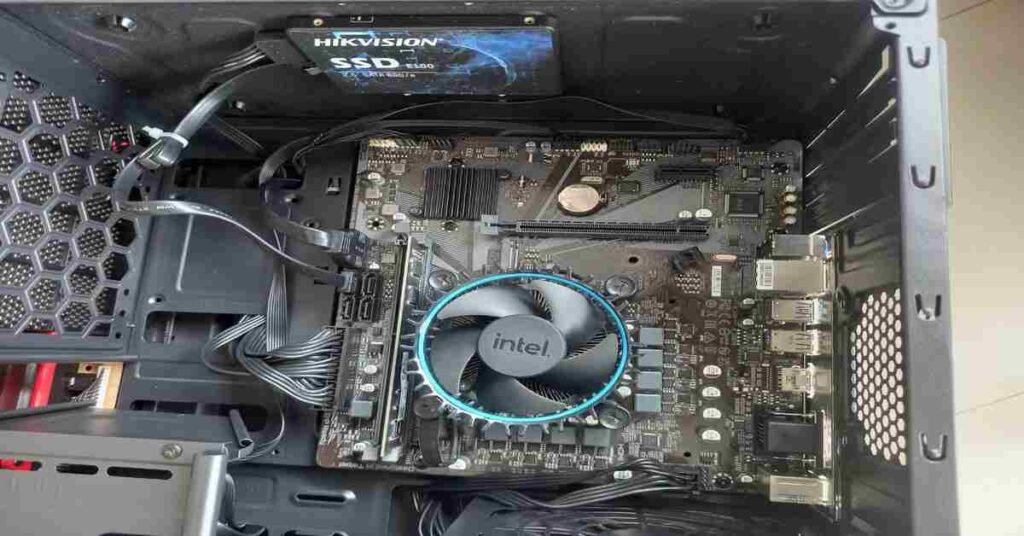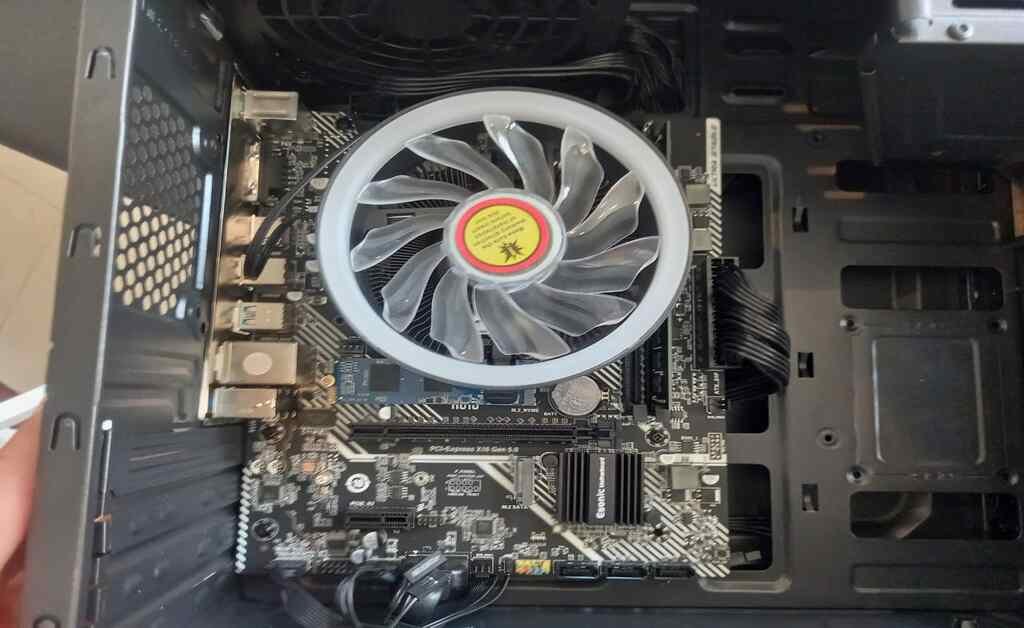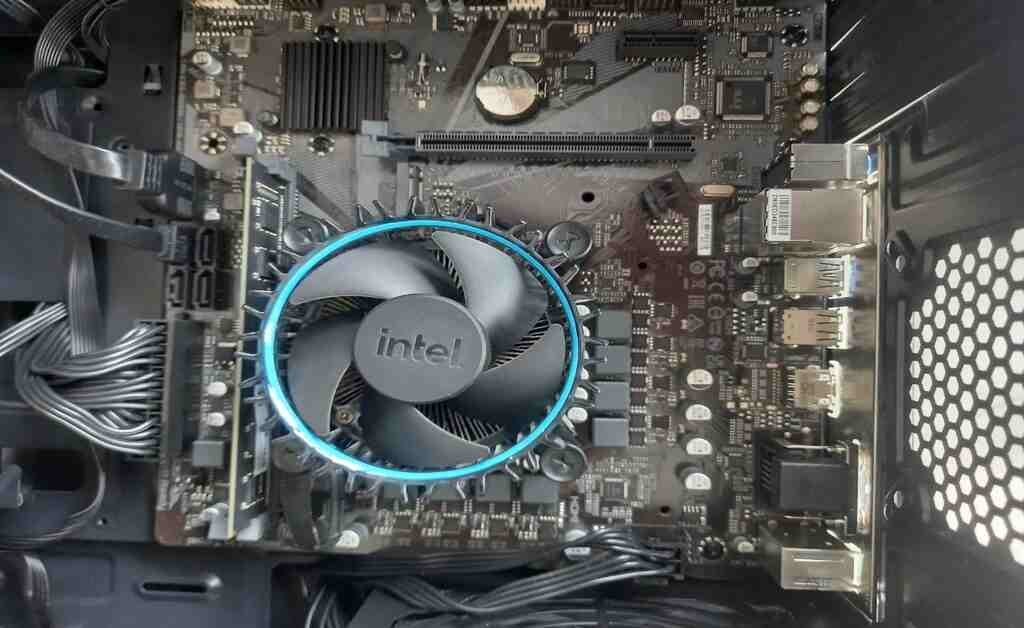However, you need to know the motherboard you are using first to troubleshoot or upgrade your PC. Your motherboard defines the selection of harmonious components and is the constituent element in your system’s performance. This is where we will lead you through the easy procedure to have your motherboard model identified.
Locate Your Motherboard
Finding the Motherboard Inside Your Computer
Using Command Prompt:
- Press Windows Key + X and select “Command Prompt (Admin)”.
- In the Command Prompt window, type wmic baseboard get product, Manufacturer, version, serial number and press Enter.
- The information displayed will include the motherboard manufacturer, model, version, and serial number.
If you can deal with hardware, you can gape inside the computer case to find the motherboard somewhere. First, we request your computer turn off and unplug from the power source. After that, focus on the farthest and largest circuit board, which is usually attached and suspended on the backside of the case.
Look for Model Numbers and Labels on the Motherboard

Identifying Model Numbers and Labels on Your Motherboard
However, the motherboard is more than it looks. You will see at the surface the various labels and names imprinted beside each component. Look up situations that display “Model,” “Serial Number,” or “Manufacturer.” Using keywords aimed at search engines will help you stumble on the facts about your MB.
Utilize System Information Tools
Using System Information Tools to Identify Your Motherboard
Using System Information:
- Press Windows Key + R to open the Run dialog box.
- Type msinfo32 and press Enter.
- Look for the “System Manufacturer” and “System Model” in the System Information window.
These will tell you the motherboard manufacturer and model.
Have the software tools at your disposal to discover the type of motherboard you have. In Windows, you can use a built-in System Information tool. The easiest way is to enter “System Information” into the search box, open the program, and go to the “System Summary” section. Here is where you can get comprehensive details about the motherboard of your computer, together with its producer and model number.
Check BIOS/UEFI

Accessing BIOS/UEFI to Determine Your Motherboard Model
Accessing the BIOS/UEFI setting is another method to know its model name. Restart your PC or laptop and then enter the system BIOS/UEFI interface by pressing the prescribed key (displayed on the startup screen). Afterwards, please go to the “System Information” section or “Mainboard Information”. On this page, you’ll see details about your motherboard model.
Using Third-Party Software
- Download and install a third-party system information tool like CPU-Z or Speccy.
- Open the software, providing detailed information about your system, including the motherboard model.
Exploring Third-Party Software Solutions for Motherboard Identification
If you need more than built-in functions, you can get help from other software. Many diverse freeware tools have been launched online to identify hardware components, including motherboards. Users commonly prefer CPU-Z, Speccy, and HWiNFO software, among others. Download and install the software package, which will give in-depth information about your motherboard model.
Consult Manufacturer Documentation
Referring to Manufacturer Documentation for Detailed Information
If you turn out to be unable to recognize the motherboard, don’t demoralize yourself! Many motherboard manufacturers issue in-depth documentation guides, which can be found online. Navigate to the manufacturer’s website of your laptop or motherboard and go to a section with “support” or “downloads.” In such cases, you could get various manuals, specifications sheets, and other items needed for detailed identification of the motherboard model.
Check Physical Characteristics
Physical Inspection:
- Power off and unplug your computer.
- Open the computer case.
- Locate the motherboard, which is the large circuit board inside the computer.
- Look for a label or text printed on the motherboard that indicates the manufacturer and model.
Remember to handle your computer’s hardware carefully and avoid static electricity by grounding yourself before touching any components.
Examining Physical Characteristics for Identification
In exceptional cases, you will be bottom to spot your motherboard by appearance. Make sure to consider the facets like the size and format of the board, the position of components, the RAM slot and expansion slot, and the architectural properties or branding. By juxtaposing these features with pictures and writings on the web, you can quickly refine your search and even motherboard what you need
Seeking Help from Online Communities and Forums
If assistance still needs to be given, there is no hesitation when seeking technological support from communities and forums about hardware computers. Your needs could be served by websites like Reddit’s r/buildapc and Tom’s Hardware building forums, which have knowledgeable communities of users ready to help you know which motherboard to choose. Please indicate as much information as you can about your system, such as labels, coat of arms, or other relevant symbols, and you might be lucky enough to be referred in the right direction.
Consider Professional Assistance
Evaluating the Option of Seeking Professional Help
If all the other methods fail and you still cannot find your motherboard, consider approaching a professional for help. Computer repair shops and qualified IT persons know how to use specialized tools and possess expertise that may help them discover your motherboard’s model. This alternative can cost you, but you will have peace of mind and get the precise details about your hardware.
Keep Records for Future Reference
Importance of Keeping Records for Future Reference
After you locate your motherboard, retaining the details for future cases becomes essential. Whether you write down the motherboard model in an actual digital document or store it in the software of your choice, you can remember and search for a suitable model in the future. These data can be of great importance when contacting technical support service, buying the same components, or performing updates and upgrades upgrades.
Regularly Update Your Knowledge
Encouraging Ongoing Learning and Exploration
Computer hardware is being built in a world in constant motion, bringing new technologies and products to it frequently. To stay well-versed and powerful, try to fulfil the mission of checking up your knowledge of motherboards and other constituents from time to time. Subscribe to tech newsletters and YouTube channels by experts, and participate in online communities to fill in the knowledge gap. Take a look at where the industry is heading in regards to computer hardware.
Share Your Knowledge
Sharing Your Expertise with Others
Once you’ve successfully identified your motherboard, consider sharing your experience with others. Whether through online forums, social media platforms, or personal blogs, sharing your knowledge can help others facing similar challenges. By contributing to the collective pool of information, you can make identifying motherboards easier for others in the future.
Stay Patient and Persistent
Emphasizing the Importance of Patience and Persistence
Thus, it’s just not an issue that you will get to know what motherboard is in particular, but as long as you don’t get puzzled by it, there should be no trouble. Although it may lead you to be tired and depressed, you still have your friend, peace, and mind to make a sound choice of motherboard and relax to calm your nervousness and persevere.
On the longer end, self-help and relaxation techniques are more potent if these have been experimented with different approaches that may be your own. It is undeniable that I do not experience a single flash of embarrassment as if it were a requirement to ask for help. On the other hand, know that the same enjoyable satisfaction and achievement will come from figuring it out by yourself and learning how the hardware system works.
Explore Advanced Techniques
Exploring Advanced Methods for Motherboard Identification
For those familiar with the technology or more daring, there are understandable techniques for identifying motherboards. They could involve, among other things, using diagnostic tools, analyzing system logs, or directly checking the motherboard for unique markers. Being quite some effort and time-consuming, these approaches let their practitioner delve deeper and can be helpful in certain circumstances.
Keep Your System Healthy
Maintaining Your Computer System for Optimal Performance
Moreover, after you have figured out your mainboard, ensure that you take measures to sustain your system for the best computer function. Besides scheduling regular cleaning to get rid of dirt and dust particles you may have accumulated, ensure you properly ventilate the space to prevent the systems from overheating. Updates of drivers and firmware are essential in preserving compatibility and stability. By consistently going hand in hand with the system maintenance, you can avoid the hardware replacement sooner than expected and have a trend in improvement.
Consider Upgrading Your Motherboard
Exploring the Option of Upgrading Your Motherboard
An inexpensive action you can take is determining whether your motherboard is old or restricts your computer’s performance, and then you contemplate replacements with a better model. With a motherboard upgrade, you can utilize the most recently available technology, like quicker CPU, increased RAM, and easier access to external devices. Before making decisions and buying any part, investigate compatibility with the rest of your components and consider things like budget and the possible future upgrade.
Seek Professional Assistance if Needed
Consulting Experts for Complex Situations
It might be impossible to do all that yourself when locating your motherboard or trying out new hardware beyond your comfort zone. If you encounter trouble or confusion, take your time getting professional help. Shops that fix computers and technicians can guide and support you to meet your targets and overcome any IT-related problems.
Conclusion:
The core knowledge of identifying your motherboard is a vital skill for any computer user. Either you’re a new user or an experienced enthusiast. Through the practical procedures described in this tutorial and referring to the offered resources and methods, you can spare some thought to what motherboard one uses for their computer and resolve the related issues. Whether replacing a power supply, installing a new capability, or just a plain upgrade, the knowledge about your computer hardware, basically your motherboard and model, is a powerful weapon to take charge of and have your computer work for your betterment.
Read also: Blockchain Integration in Mobile Apps: Beyond Cryptocurrency


